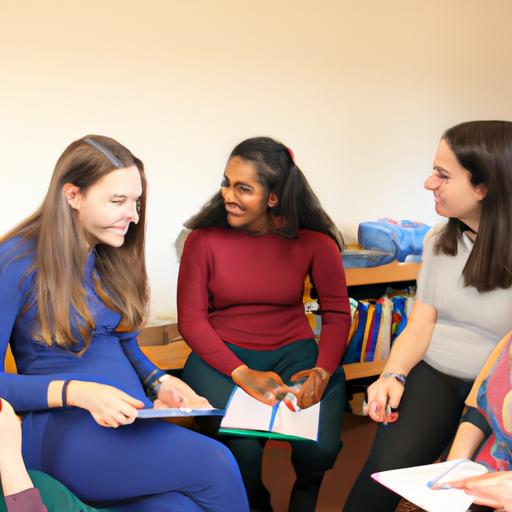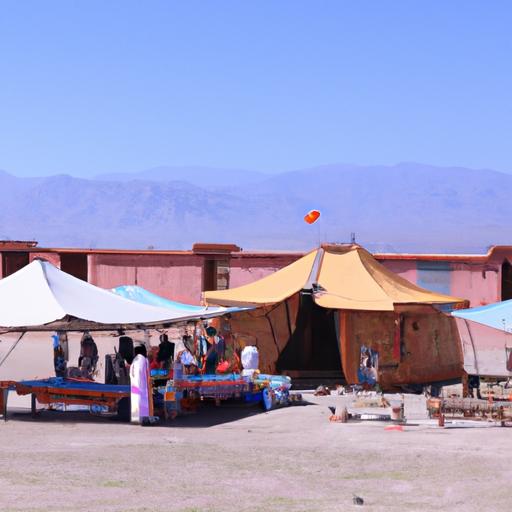Example of Cultural Exchange Activities: Embracing Diversity and Building Bridges

In a world that is increasingly interconnected, cultural exchange activities play a vital role in promoting understanding, appreciation, and acceptance of diverse cultures. These activities serve as a powerful tool to bridge the gaps between nations, fostering global awareness and empathy. But what exactly do we mean by cultural exchange activities?
Cultural exchange activities encompass a wide range of experiences that involve the interaction and sharing of ideas, traditions, and values between individuals from different cultural backgrounds. These activities can take various forms, such as student exchange programs, language immersion programs, cultural festivals, homestays, and international volunteer programs.
Why are Cultural Exchange Activities Important?
Imagine a world where we all celebrate our differences and learn from one another. Cultural exchange activities allow us to break down barriers, challenge stereotypes, and build connections. By engaging in these activities, we gain a deeper understanding and appreciation of different cultures, broadening our perspectives and enriching our lives.
Through cultural exchange, we develop a sense of global awareness and empathy. We learn to see the world through the eyes of others, cultivating respect for diverse beliefs, values, and practices. This understanding fosters inclusivity and promotes a harmonious coexistence in our increasingly interconnected society.
Defining Cultural Exchange Activities
Cultural exchange activities involve the sharing of cultural knowledge, traditions, and experiences between individuals or groups from different cultural backgrounds. These activities facilitate the exchange of ideas, language, arts, and customs, creating a platform for mutual learning and growth.
Cultural exchange activities can take place in various settings, ranging from educational institutions and community organizations to international events and volunteer programs. Whether it’s hosting a foreign student, participating in a language immersion program abroad, or celebrating cultural festivals, these activities offer unique opportunities to connect, learn, and appreciate the beauty of diverse cultures.
So, let’s embark on a journey to explore the different types of cultural exchange activities and discover how they can positively impact our lives. Together, we can embrace diversity, foster understanding, and build bridges that transcend borders.
Benefits of Cultural Exchange Activities
Enhancing Understanding and Appreciation of Different Cultures
Cultural exchange activities provide a unique opportunity to immerse oneself in the customs, traditions, and values of another culture. By actively engaging with individuals from different backgrounds, we gain a deeper understanding and appreciation of their unique perspectives. We begin to see the world through their eyes, allowing us to break down barriers and challenge our own preconceived notions. This enhanced understanding fosters a sense of cultural sensitivity and respect, promoting a more inclusive and harmonious society.
Fostering Global Awareness and Empathy
In a world that is becoming increasingly interconnected, it is essential to develop a global perspective. Cultural exchange activities expose us to different ways of life, diverse worldviews, and social issues that exist beyond our immediate surroundings. Through these experiences, we broaden our horizons and cultivate a sense of global awareness. We begin to recognize our shared humanity, fostering empathy and compassion for individuals from different cultures. This global perspective not only enriches our personal growth but also equips us to tackle global challenges collectively.
Promoting Diversity and Inclusivity
Cultural exchange activities celebrate the richness of diversity. By actively engaging in cultural exchange, we create spaces that value and promote inclusivity. These activities encourage individuals from different backgrounds to come together, fostering a sense of belonging and acceptance. When we embrace diversity, we not only create a more vibrant and dynamic society but also challenge discriminatory attitudes and behaviors. Cultural exchange activities serve as a catalyst for social change, promoting a more inclusive and equitable world.
Developing Language and Communication Skills
Language is a powerful tool for cultural exchange. Engaging in activities such as language immersion programs or participating in conversations with individuals from different cultures enhances our language skills. Through these experiences, we improve our ability to communicate effectively and bridge linguistic gaps. Learning a new language opens doors to new opportunities, both personally and professionally. It allows us to connect with people from diverse backgrounds, fostering deeper relationships and understanding.
Creating Lifelong Connections and Friendships
One of the most rewarding aspects of cultural exchange activities is the opportunity to form lifelong connections and friendships. When we engage with individuals from different cultures, we build bridges that transcend borders. These connections not only enrich our lives but also create a network of support, understanding, and shared experiences. These lasting friendships become a testament to the power of cultural exchange in fostering meaningful connections that endure across time and distance.
By participating in cultural exchange activities, we reap a multitude of benefits – from gaining a deeper understanding of different cultures to developing essential skills and forming lasting connections. Let’s now delve into the various types of cultural exchange activities that provide these enriching experiences.
Types of Cultural Exchange Activities
Cultural exchange activities come in various forms, offering unique opportunities for individuals to immerse themselves in different cultures. Let’s explore some of the most common types:
A. Student Exchange Programs
Student exchange programs are a popular avenue for cultural exchange. These programs facilitate the exchange of students between educational institutions in different countries. By living and studying in a foreign country, students gain firsthand experience of another culture, language, and educational system. This immersive experience fosters cross-cultural understanding, promotes language acquisition, and builds lifelong connections.
B. Language Immersion Programs
Language immersion programs provide individuals with the chance to fully immerse themselves in a foreign language and culture. Participants are typically placed in an environment where the target language is spoken, enabling them to practice and improve their language skills. These programs often include language classes, cultural activities, and interactions with native speakers, offering a comprehensive experience that goes beyond linguistic development.
C. Cultural Festivals and Events
Cultural festivals and events celebrate the richness and diversity of different cultures. These vibrant gatherings provide a platform for communities to showcase their traditions, arts, music, and cuisine. Attending cultural festivals allows individuals to witness firsthand the unique customs and practices of various cultures, fostering appreciation and respect. It’s an opportunity to immerse oneself in the colors, sounds, and flavors of a different culture.
D. Homestays and Host Family Programs
Homestays and host family programs offer a unique opportunity to experience daily life in a foreign country. Participants live with a host family, sharing meals, traditions, and experiences. This immersive experience allows individuals to gain a deep understanding of the local culture, customs, and values. It also facilitates personal connections and friendships that can last a lifetime.
E. International Volunteer Programs
International volunteer programs combine service with cultural exchange. Participants engage in meaningful volunteer work while being exposed to a different culture. These programs often involve working on community development projects, environmental conservation efforts, or education initiatives. By working side by side with locals, volunteers gain insights into the host community’s way of life and contribute to positive change.
Each type of cultural exchange activity offers a unique perspective and set of experiences. Whether you choose to study abroad, immerse yourself in a new language, engage in cultural festivals, live with a host family, or volunteer internationally, each opportunity presents an enriching and transformative journey of cultural understanding.
Examples of Cultural Exchange Activities
Cultural exchange activities come in various forms, each offering unique opportunities for individuals to immerse themselves in different cultures. Let’s explore some examples of these activities and discover the transformative experiences they can provide.
A. Student Exchange Programs between Schools in Different Countries
Student exchange programs offer young learners the chance to step out of their comfort zones and experience education in a foreign country. By living and studying abroad, students gain a deep understanding of another culture, language, and educational system. They develop lifelong friendships, enhance their adaptability, and broaden their horizons.
1. Benefits and Experiences of Students Participating in such Programs
Participating in a student exchange program fosters personal growth and global competence. Students become more independent, self-reliant, and adaptable as they navigate a new environment. They gain firsthand knowledge of different educational practices, teaching methods, and cultural norms. Additionally, students develop cross-cultural communication skills and empathy by engaging with their host families and fellow students.
2. Challenges and How to Overcome Them
While student exchange programs offer tremendous benefits, they can also present challenges. Students may face language barriers, homesickness, or cultural differences. However, with proper support and guidance from program coordinators, host families, and fellow students, these challenges can be overcome. Encouraging open communication, providing cultural orientation, and establishing a support network are essential in ensuring a successful and enriching experience.
B. Language Immersion Programs in Foreign Countries
Language immersion programs provide an immersive environment for individuals to learn and practice a foreign language. By living and interacting with native speakers, participants enhance their language skills and cultural understanding simultaneously.
1. How These Programs Help in Language Acquisition
Language immersion programs offer an unparalleled opportunity to learn and become fluent in a foreign language. Through constant exposure and practice, participants develop listening, speaking, reading, and writing skills more rapidly than in traditional language courses. Immersion in the language and culture enables learners to understand idiomatic expressions, nuances, and cultural references, resulting in a holistic language learning experience.
2. Cultural Experiences and Activities Included
In addition to language learning, immersion programs often include cultural activities to provide participants with a deeper understanding of the local culture. These activities may include visits to historical sites, traditional performances, cooking classes, and interactions with locals. By engaging in cultural experiences, participants gain insights into customs, traditions, and values, fostering a greater appreciation for the language and the culture it represents.
Stay tuned as we dive into more fascinating examples of cultural exchange activities, including cultural festivals and events, homestays and host family programs, and international volunteer programs focused on cultural exchange. These activities offer profound opportunities for individuals to connect, learn, and grow as global citizens.
Organizing Cultural Exchange Activities
Creating successful cultural exchange activities requires careful planning, coordination, and attention to detail. From finding suitable partners and organizations to ensuring the safety and well-being of participants, every step plays a crucial role in organizing an enriching and memorable cultural exchange experience.
A. Planning and Coordination
To kickstart the planning process, it is essential to establish clear goals and objectives for the cultural exchange activities. Determine the desired outcomes, whether it’s promoting cultural understanding, language acquisition, or fostering friendships. Develop a comprehensive timeline, outlining key milestones and deadlines.
Coordination is key when organizing cultural exchange activities. Identify key stakeholders, such as educational institutions, community organizations, or international partners, and establish effective communication channels. Delegate responsibilities and create a team that works collaboratively to ensure the smooth execution of the exchange program.
B. Finding Suitable Partners or Organizations
Finding suitable partners or organizations is crucial for the success of a cultural exchange activity. Seek out reputable organizations or institutions that have a track record in organizing cultural exchange programs. Conduct thorough research, read reviews, and seek recommendations to ensure credibility and reliability.
Consider factors such as the organization’s expertise, cultural compatibility, and the resources they offer. Collaborate with partners who share your vision and align with your goals for the cultural exchange activities. Establish strong partnerships that foster trust, open communication, and mutual cooperation.
C. Preparing Participants for Cultural Exchange
Preparing participants for cultural exchange is vital to ensure they have a meaningful and fulfilling experience. Provide pre-departure orientation sessions that cover topics such as cultural norms, etiquette, language basics, and safety guidelines. Encourage participants to actively engage in learning about the host culture, its history, traditions, and customs.
Facilitate intercultural training sessions that promote open-mindedness, empathy, and cultural sensitivity. Help participants develop the necessary skills to navigate cultural differences, communicate effectively, and embrace diversity.
D. Ensuring Safety and Well-being during the Activities
The safety and well-being of participants should be a top priority throughout the cultural exchange activities. Establish clear guidelines and procedures to address any potential risks or emergencies. Conduct thorough background checks on host families, accommodation providers, or partner organizations to ensure a safe environment for participants.
Provide comprehensive insurance coverage for participants, including health insurance and travel insurance. Develop contingency plans and emergency protocols to handle unforeseen circumstances. Regularly communicate with participants and their families to address any concerns and provide support when needed.
By meticulously organizing and overseeing these important aspects, cultural exchange activities can smoothly unfold, leaving participants with unforgettable experiences that foster intercultural understanding, personal growth, and lifelong connections.
Conclusion
In conclusion, cultural exchange activities are not just mere experiences; they are transformative journeys that shape our perspectives, broaden our horizons, and foster a sense of global community. By actively engaging in these activities, we unlock the potential to create a world where diversity is celebrated, understanding is nurtured, and connections are forged.
Through cultural exchange, we gain a deep appreciation for the richness and uniqueness of different cultures. We develop empathy and respect, breaking down barriers that divide us. These activities provide us with the opportunity to learn new languages, understand different customs, and build lifelong friendships that transcend borders.
By embracing cultural exchange activities, we contribute to a more inclusive and interconnected world. We become ambassadors of understanding, promoting peace and harmony in our communities. Let us not underestimate the power of these activities in shaping our collective future.
In a world where cultural diversity is a strength, cultural exchange activities serve as a catalyst for positive change. They ignite curiosity, foster connections, and create a shared sense of humanity. So, let’s embark on this journey together, celebrating our differences, embracing our similarities, and building a brighter future through cultural exchange activities.
Remember, the world is a tapestry of cultures, waiting to be explored. Let us seize every opportunity to engage in cultural exchange activities and be the change we wish to see in the world.
“The more I traveled, the more I realized that fear makes strangers of people who should be friends.” – Shirley MacLaine
Conclusion: So above is the Example of Cultural Exchange Activities: Embracing Diversity and Building Bridges article. Hopefully with this article you can help you in life, always follow and read our good articles on the website: travel.lakeviewinnmn.com



